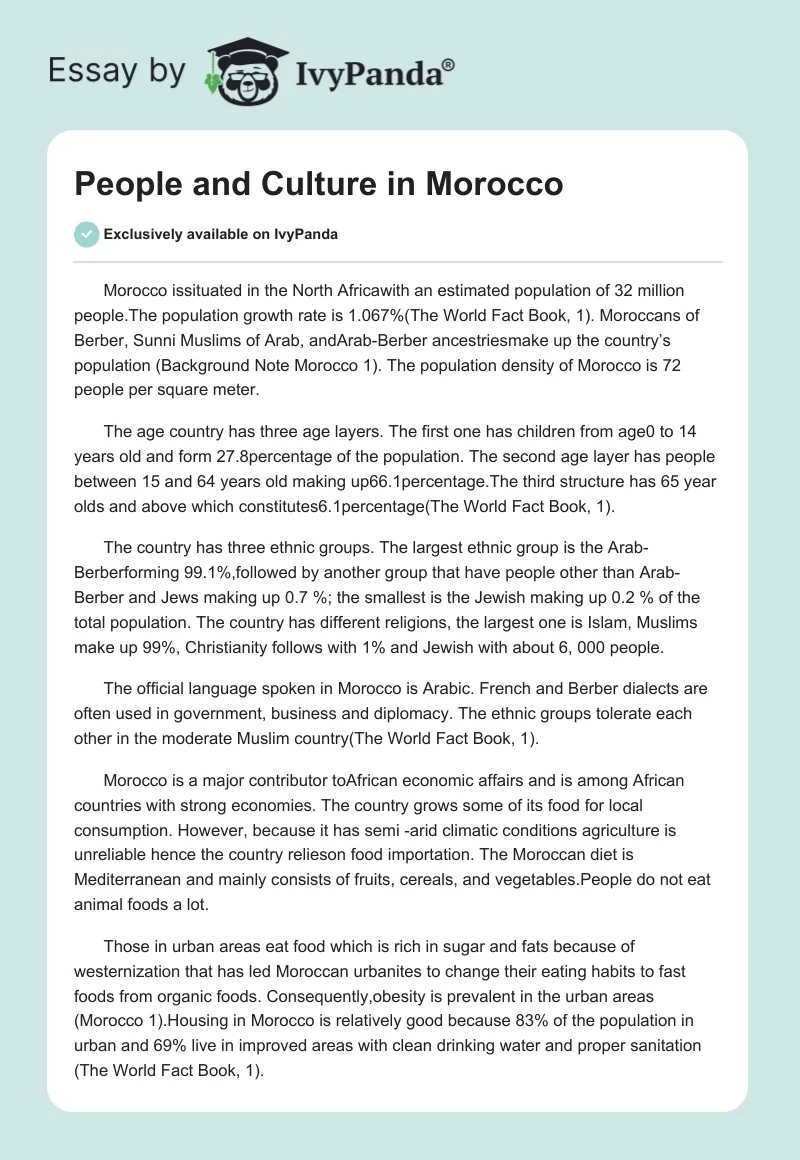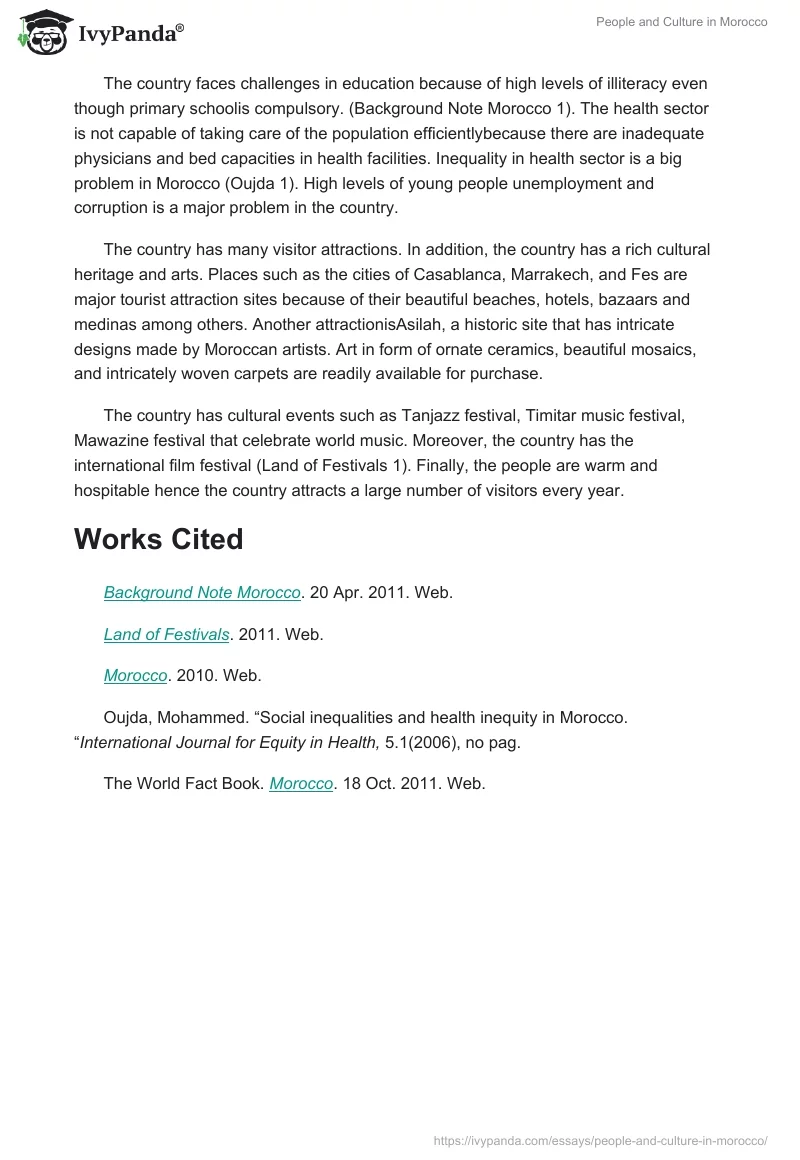Morocco issituated in the North Africawith an estimated population of 32 million people.The population growth rate is 1.067%(The World Fact Book, 1). Moroccans of Berber, Sunni Muslims of Arab, andArab-Berber ancestriesmake up the country’s population (Background Note Morocco 1). The population density of Morocco is 72 people per square meter.
The age country has three age layers. The first one has children from age0 to 14 years old and form 27.8percentage of the population. The second age layer has people between 15 and 64 years old making up66.1percentage.The third structure has 65 year olds and above which constitutes6.1percentage(The World Fact Book, 1).
The country has three ethnic groups. The largest ethnic group is the Arab-Berberforming 99.1%,followed by another group that have people other than Arab-Berber and Jews making up 0.7 %; the smallest is the Jewish making up 0.2 % of the total population. The country has different religions, the largest one is Islam, Muslims make up 99%, Christianity follows with 1% and Jewish with about 6, 000 people.
The official language spoken in Morocco is Arabic. French and Berber dialects are often used in government, business and diplomacy. The ethnic groups tolerate each other in the moderate Muslim country(The World Fact Book, 1).
Morocco is a major contributor toAfrican economic affairs and is among African countries with strong economies. The country grows some of its food for local consumption. However, because it has semi -arid climatic conditions agriculture is unreliable hence the country relieson food importation. The Moroccan diet is Mediterranean and mainly consists of fruits, cereals, and vegetables.People do not eat animal foods a lot.
Those in urban areas eat food which is rich in sugar and fats because of westernization that has led Moroccan urbanites to change their eating habits to fast foods from organic foods. Consequently,obesity is prevalent in the urban areas (Morocco 1).Housing in Morocco is relatively good because 83% of the population in urban and 69% live in improved areas with clean drinking water and proper sanitation (The World Fact Book, 1).
The country faces challenges in education because of high levels of illiteracy even though primary schoolis compulsory. (Background Note Morocco 1). The health sector is not capable of taking care of the population efficientlybecause there are inadequate physicians and bed capacities in health facilities. Inequality in health sector is a big problem in Morocco (Oujda 1). High levels of young people unemployment and corruption is a major problem in the country.
The country has many visitor attractions. In addition, the country has a rich cultural heritage and arts. Places such as the cities of Casablanca, Marrakech, and Fes are major tourist attraction sites because of their beautiful beaches, hotels, bazaars and medinas among others. Another attractionisAsilah, a historic site that has intricate designs made by Moroccan artists. Art in form of ornate ceramics, beautiful mosaics, and intricately woven carpets are readily available for purchase.
The country has cultural events such as Tanjazz festival, Timitar music festival, Mawazine festival that celebrate world music. Moreover, the country has the international film festival (Land of Festivals 1). Finally, the people are warm and hospitable hence the country attracts a large number of visitors every year.
Works Cited
Background Note Morocco. 20 Apr. 2011. Web.
Land of Festivals. 2011. Web.
Morocco. 2010. Web.
Oujda, Mohammed. “Social inequalities and health inequity in Morocco. “International Journal for Equity in Health, 5.1(2006), no pag.
The World Fact Book. Morocco. 18 Oct. 2011. Web.


